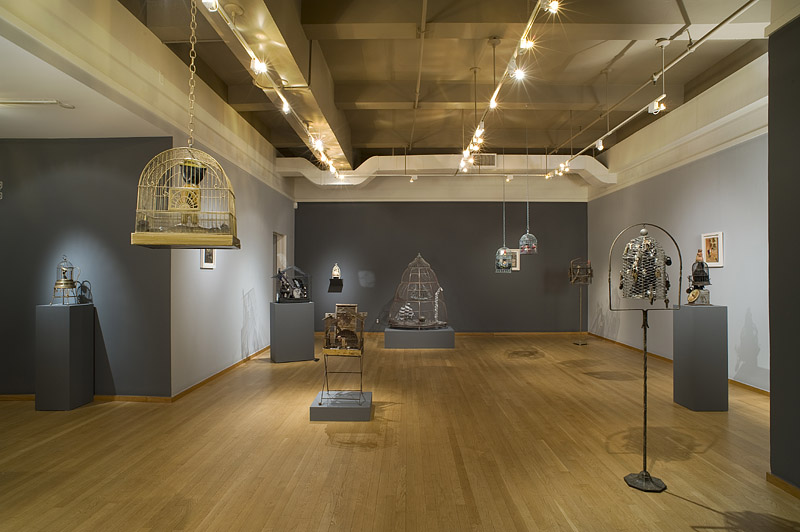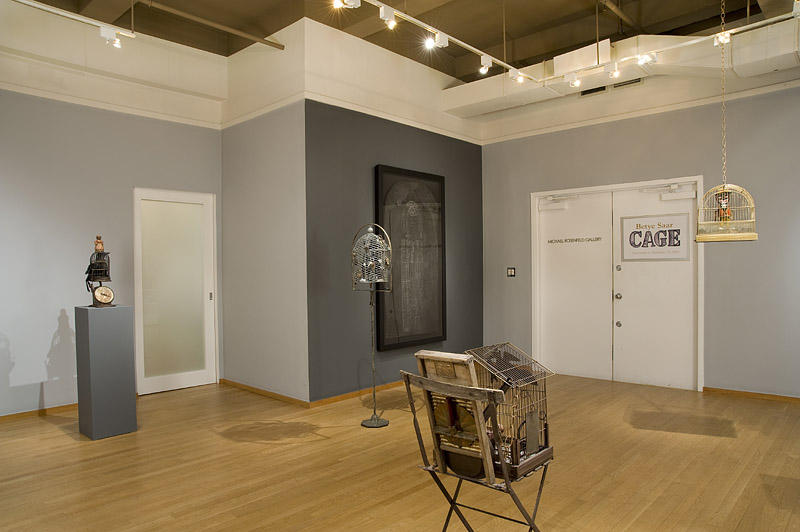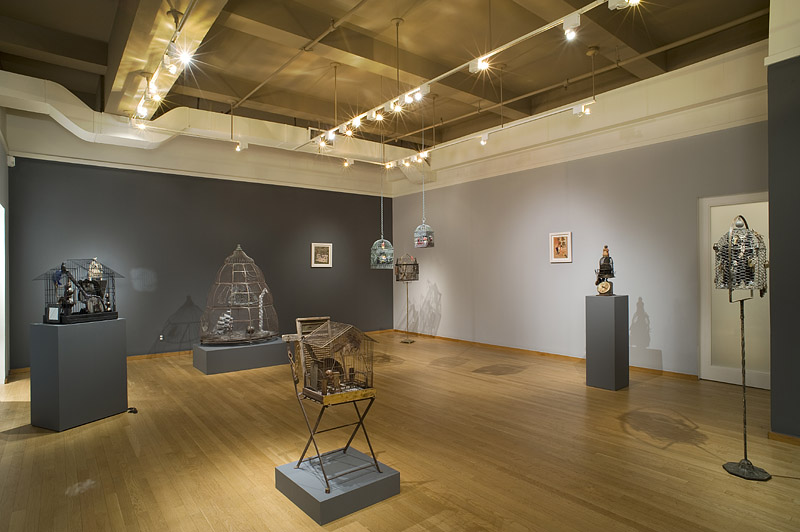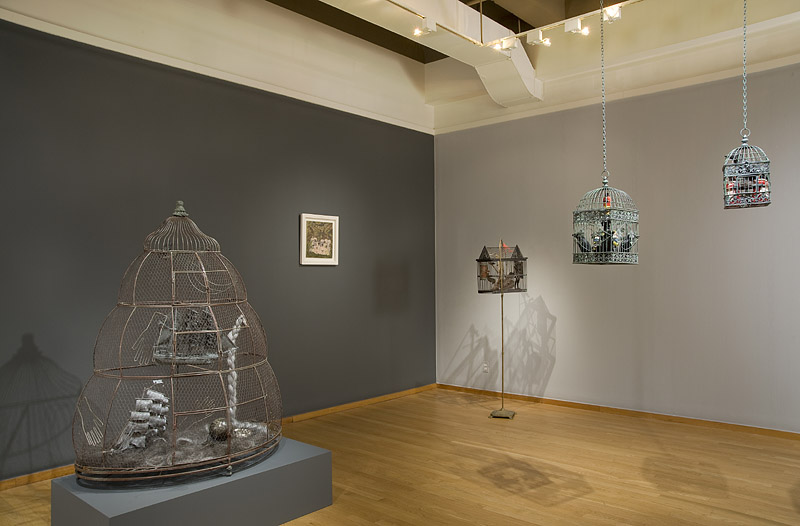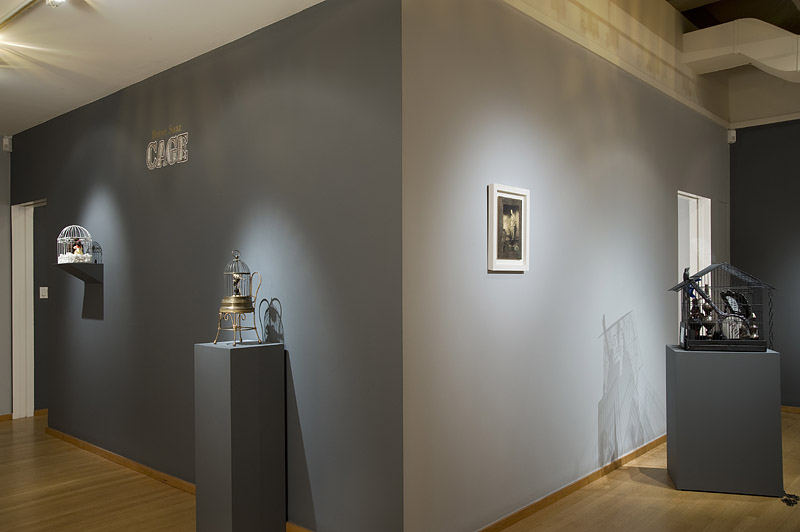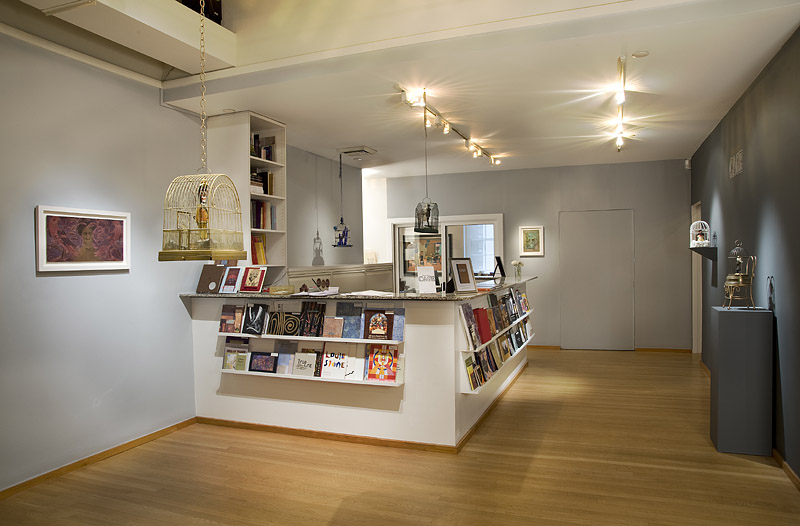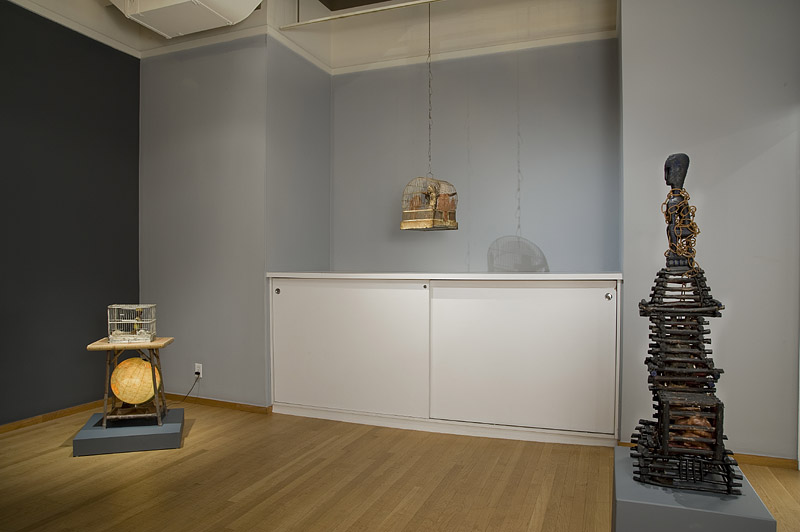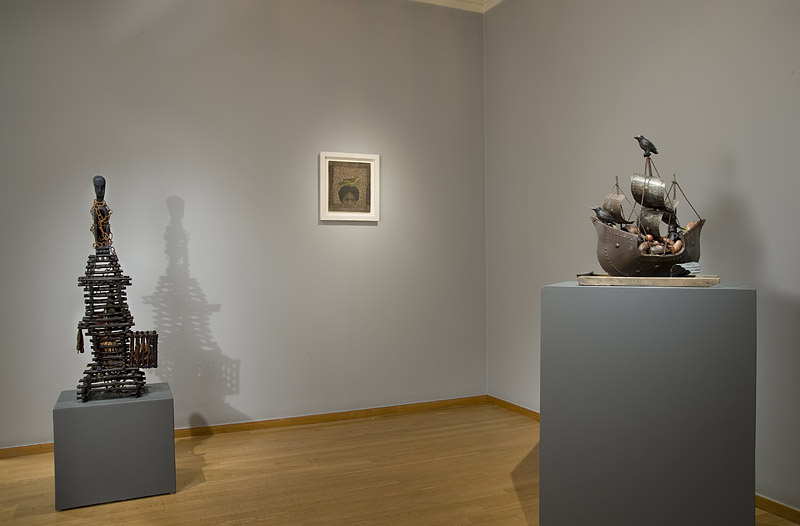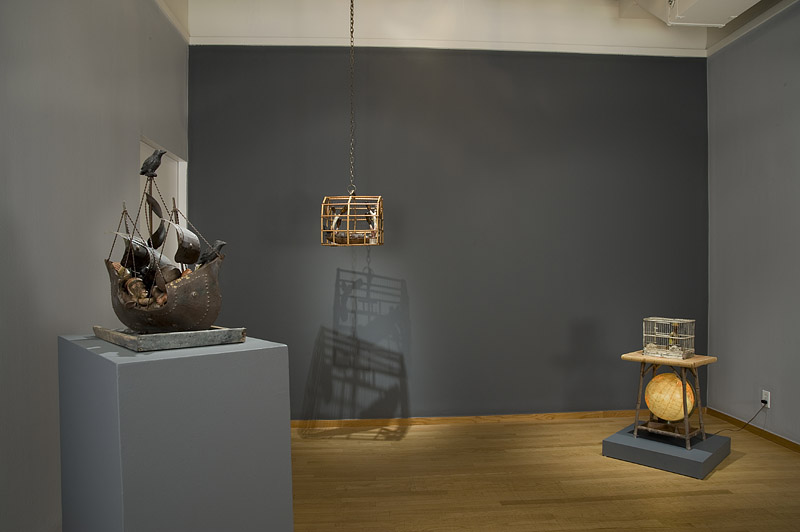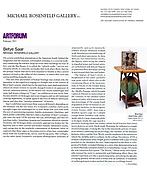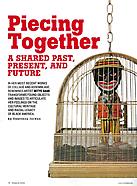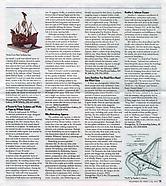(New York – October 20, 2010) Michael Rosenfeld Gallery is pleased to present its fifth solo exhibition for the artist Betye Saar (American, born 1926). Betye Saar: CAGE, A New Series of Assemblages & Collages will be on view from November 6 to December 23, 2010. This ambitious installation of twenty-one mixed-media assemblages and seven collages represents four years of intensive studio work by the eighty-four-year-old Californian. Over the years, Saar has collected various cages from flea markets, yard sales, and antique shops; these ordinary household objects now comprise the foundation for a series centered on forms of containment and confinement. In Saar’s art, the cage is a signifier of physical incarceration and a metaphor for social, psychological, spiritual, economic, and historical exclusion. But, consistent Saar’s affirmative outlook, the cage is also a bold symbol of resilience and survival. The assemblages and collages in Betye Saar: CAGE also share with her other works a global perspective interlaced with the artist’s personal interest in metaphysics, magic, mystery, legends, and superstitions. The questions of repression, disenfranchisement, and resistance that dominate the lives of many people around the world are fused with lessons from US history, African spiritualism, and the rich visual traditions of Afro-diasporic art.
The exhibition is accompanied by a fully illustrated color catalogue with an essay by noted scholar and professor George Lipsitz. In his essay, Lipsitz states:
"In the different works that Saar presents in Cage, inanimate objects evoke action and motion. Her ideas and arguments “move along,” propelled by birds that do not fly, banjos that do not play, ships that do not sail, cotton that does not grow, and servants who do not serve. Large figures in small cages symbolically rebuke a society where too many people are locked up in jails, locked out of opportunities, locked into habits they cannot break, and locked on to pursuits that will not make them happy. Through ordinary objects salvaged from the activities of everyday life—empty bottles, washboards, children’s toys, and mirrors—Saar reminds us that people can be imprisoned just as surely, just as securely, by desires, stories, and ideas as by stone walls and iron bars."
Born in Los Angeles, Betye Saar received her BA from the University of California (1949) and pursued graduate studies at California State University at Long Beach, the University of Southern California, and California State University at Northridge. Celebrated for her multimedia collages, box assemblages, altars, and installations consisting of found materials, Saar has

